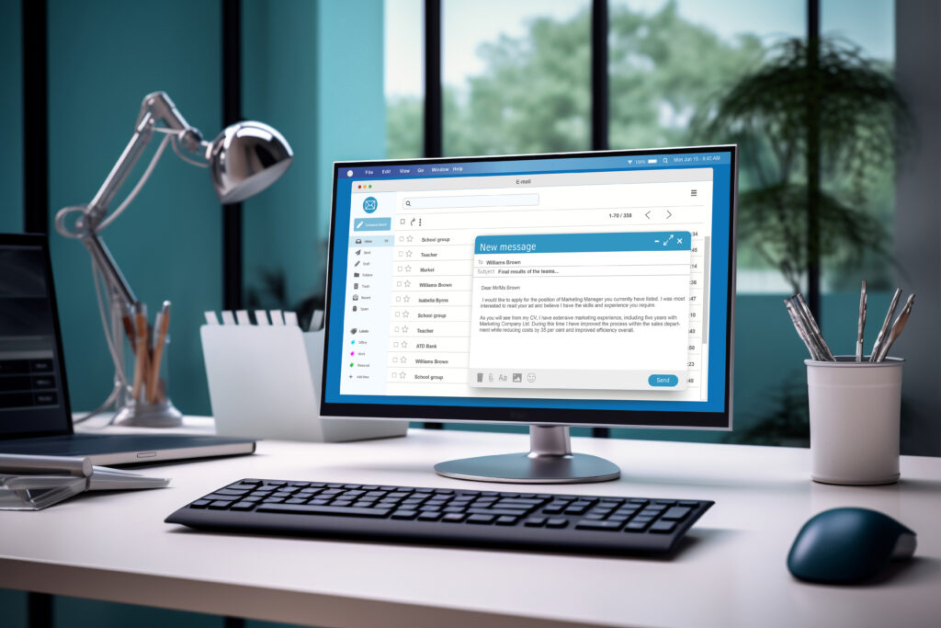How to research media contacts is a critical skill for anyone involved in public relations, marketing, or communications.
It’s not just about collecting names and email addresses; it’s about identifying the right journalists, bloggers, influencers, and media professionals who cover topics aligned with our brand and message.
By conducting thorough journalist research and leveraging media databases, social media, and news monitoring tools, we can build targeted media lists that improve pitch success and foster meaningful media relations.
This article explores how to research media contacts systematically and strategically to maximize media engagement.
Key Takeaways
- Effective media contact research combines media databases, social media, and news monitoring to find accurate, relevant contacts.
- Filtering by industry focus, media type, geography, and journalist preferences ensures targeted outreach.
- Regular contact verification and relationship tracking maintain media list accuracy and improve engagement.
Understanding the Importance of How to Research Media Contacts
Source: Jennifer Berson
Why Researching Media Contacts Matters
We know that sending a generic pitch to a broad list rarely yields results. Researching media contacts allows us to:
- Identify journalists and influencers who cover relevant topics.
- Tailor pitches to their interests and beats.
- Build personalized, respectful relationships.
- Increase the likelihood of media coverage and engagement.
Without proper research, our outreach risks being ignored or perceived as spam.
What Constitutes a Media Contact?
A media contact is any journalist, reporter, editor, blogger, podcaster, or influencer who can share our story with their audience.
Each contact has a media outlet, beat or specialty, preferred communication style, and audience demographics. Understanding these factors helps us connect authentically (1).
Using Media Databases for Journalist Research

Overview of Media Databases
Media databases provide extensive directories of media contacts, offering detailed profiles including:
- Journalist names and roles.
- Media outlet names and types.
- Industry focus and beats.
- Contact information (email, phone).
- Recent coverage and social media links.
These platforms often include AI recommendations and content-matching features to find the best contacts for our press release content.
How to Use Media Databases Effectively
To maximize these tools, we:
- Use keyword and topic search to find journalists covering relevant subjects.
- Apply geographic, language, and media type filters to narrow results (2).
- Review recent articles and journalist profiles to assess fit.
- Export and segment contacts for targeted outreach.
Media databases save time and improve media list accuracy but require human verification for best results.
Leveraging Social Media for Media Contact Research
Twitter and LinkedIn as Research Tools
Twitter is a favorite platform for journalists to share their work and interests. By searching hashtags, keywords, and following media outlet accounts, we discover:
- Journalist names and beats.
- Real-time coverage and story ideas.
- Contact preferences and engagement style.
LinkedIn offers professional profiles detailing roles, media affiliations, and career history, helping us understand journalist backgrounds and connections.
Conducting Hashtag and Keyword Searches
We use relevant hashtags and keywords related to our industry or campaign to identify active journalists and influencers discussing those topics. This helps us find niche journalists and emerging voices.
Social Media Listening and Monitoring
Monitoring social media conversations and trends reveals journalists’ current interests and hot topics, enabling us to pitch timely, relevant stories.
News Monitoring and Article Analysis
Setting Up Google Alerts and News Monitoring Tools
Google Alerts and specialized news monitoring platforms notify us of recent articles and mentions related to our industry, competitors, or topics. This helps us:
- Track journalist activity.
- Identify reporters covering relevant stories.
- Discover media outlets interested in our niche.
Analyzing Recent Coverage
Reviewing journalists’ recent articles provides insight into their writing style, tone, and preferred topics. This analysis guides pitch customization and increases relevance.
Using Editorial Calendars and News Desks
Some media outlets publish editorial calendars or have news desks that outline upcoming themes and story priorities. Researching these helps us time pitches for maximum impact.
Filtering and Segmenting Media Contacts
Applying Geographic and Language Filters
We filter contacts by city, state, country, and language to target local, regional, or international media relevant to our campaign’s scope.
Segmenting by Media Type and Role
Segmentation by print media, broadcast media, online media, or social media contacts allows us to tailor messaging to each channel’s format and audience. We also segment by role—editors, reporters, bloggers, podcasters—to address the right contact for each story.
Industry and Beat Segmentation
Focusing on contacts’ industry focus and beat ensures our outreach matches their expertise, increasing the chance of coverage.
Verifying and Updating Media Contact Information
Importance of Contact Verification
Accurate contact information is crucial. Outdated or incorrect emails and phone numbers waste time and harm our reputation.
Verification Methods
We verify contacts by:
- Cross-referencing multiple sources.
- Checking recent articles and social media activity.
- Using email verification tools.
- Sending test emails or introductory messages.
Regular Media List Updating
We schedule periodic reviews to remove inactive contacts, add new relevant journalists, and update preferences and notes.
Building Relationships Through Personalized Outreach
Understanding Journalist Preferences
Researching each contact’s preferred communication style, pitch timing, and content interests helps us personalize outreach and respect their workflow.
Taking Notes and Tracking Interactions
Maintaining media contact notes and history in CRM tools or spreadsheets supports follow-ups and relationship building.
Attending Industry Events and Conferences
Networking at events provides opportunities to meet journalists face-to-face, deepen relationships, and discover new contacts.
Tools and Techniques for Efficient Media Contact Research
Media Database Software Features
We leverage features like AI recommendations, content matching, filtering, and export/import capabilities to streamline research and list building.
Spreadsheet and CRM Management
Organizing contacts in spreadsheets or CRM systems helps manage segmentation, notes, and outreach history.
Automation and Media List Filtering
Automation tools assist in filtering contacts based on criteria, updating information, and integrating with outreach platforms.
FAQs
How do media databases help in researching media contacts?
Media databases provide comprehensive directories of journalists, editors, bloggers, and influencers with detailed profiles including contact info, beats, and recent coverage.
They allow keyword and geographic filtering, AI-driven recommendations, and content matching to find relevant contacts efficiently.
Using these databases saves time, improves accuracy, and supports targeted media outreach, but human verification remains essential for best results.
What role does social media play in media contact research?
Social media platforms like Twitter and LinkedIn are valuable for discovering journalist names, beats, and contact preferences. Hashtag and keyword searches reveal active reporters covering relevant topics.
Monitoring social conversations helps identify trending stories and journalist interests, enabling timely, tailored pitches. Social media research complements traditional databases by providing real-time insights and direct engagement opportunities.
How can we verify the accuracy of media contact information?
We verify contact information by cross-checking multiple sources, reviewing recent articles and social media activity, using email verification tools, and sending test messages.
Verification reduces bounce rates and improves outreach success. Regular updates and monitoring ensure our media list remains current and reliable, maintaining our professional reputation.
What filters should we apply when searching for media contacts?
Applying filters such as geographic location (city, state, country), media type (print, broadcast, online, social), language, industry focus, and journalist role helps narrow down relevant contacts.
These filters ensure our outreach targets the right audience, increasing pitch relevance and media engagement.
Why is segmenting media contacts important?
Segmenting media contacts by beat, industry, geography, and media type allows us to tailor messages to specific journalist interests and audience demographics.
Segmentation improves pitch personalization, relevance, and response rates, making our media outreach more efficient and effective.
How do we use recent coverage to improve media contact research?
Analyzing recent coverage helps us understand a journalist’s current interests, writing style, and editorial focus. This insight guides pitch customization and timing, increasing the likelihood of media engagement and coverage.
What are best practices for maintaining media contact notes?
We keep detailed notes on each contact’s preferences, past interactions, coverage history, and communication style. Using CRM tools or spreadsheets to track these details supports personalized outreach, timely follow-ups, and stronger media relationships.
How can attending industry events aid media contact research?
Industry events and conferences provide opportunities to meet journalists face-to-face, learn about their interests, and build rapport. Networking at these events helps us discover new contacts, deepen existing relationships, and gain insights that improve pitch relevance.
What is the benefit of using AI recommendations in media databases?
AI recommendations analyze our content and match it with journalists whose beats and recent coverage align with our story. This technology streamlines contact discovery, enhances targeting accuracy, and saves time during media list building.
How do we integrate media contact research into our outreach strategy?
We integrate research by building segmented, verified media lists aligned with campaign goals. Tailored pitches based on journalist preferences and recent coverage improve engagement. Tracking interactions and updating contacts ensures ongoing relationship management and outreach effectiveness.
Conclusion
Researching media contacts thoroughly is essential for successful media outreach and PR campaigns.
By combining media databases, social media research, news monitoring, and verification methods, we build accurate, relevant media lists tailored to our target audience and message.
Organizing and segmenting contacts, respecting journalist preferences, and maintaining relationship notes enhance personalization and media engagement.
Mastering media contact research empowers us to deliver compelling, timely pitches that foster meaningful media relations and maximize coverage opportunities.
For streamlined media outreach and efficient distribution, consider using NewswireJet, a trusted platform that simplifies targeting and boosts visibility.
Related Articles
- https://newswirejet.com/understanding-different-media-types/
- https://newswirejet.com/examples-types-of-media-outlets/
- https://newswirejet.com/what-is-a-media-list/





